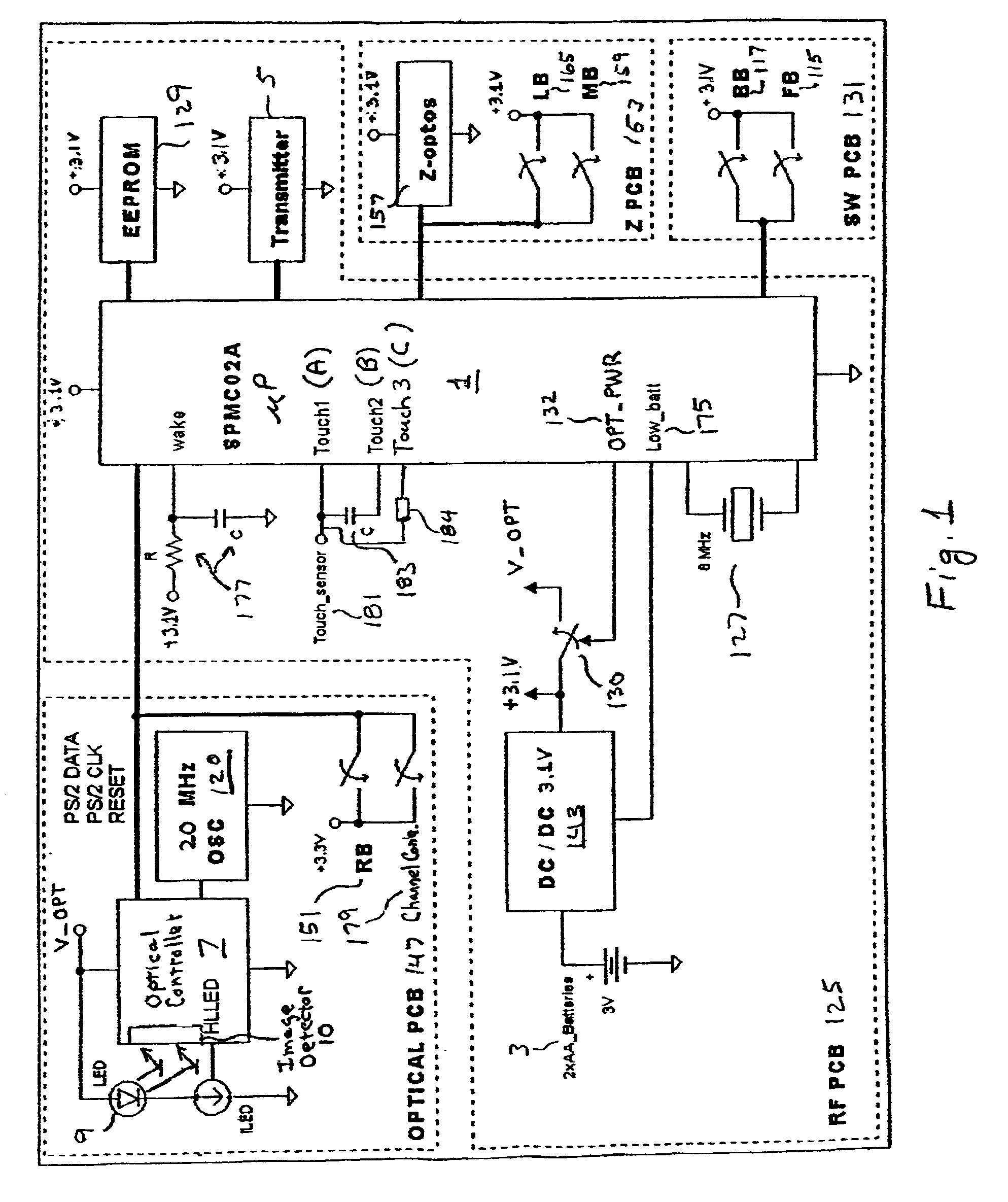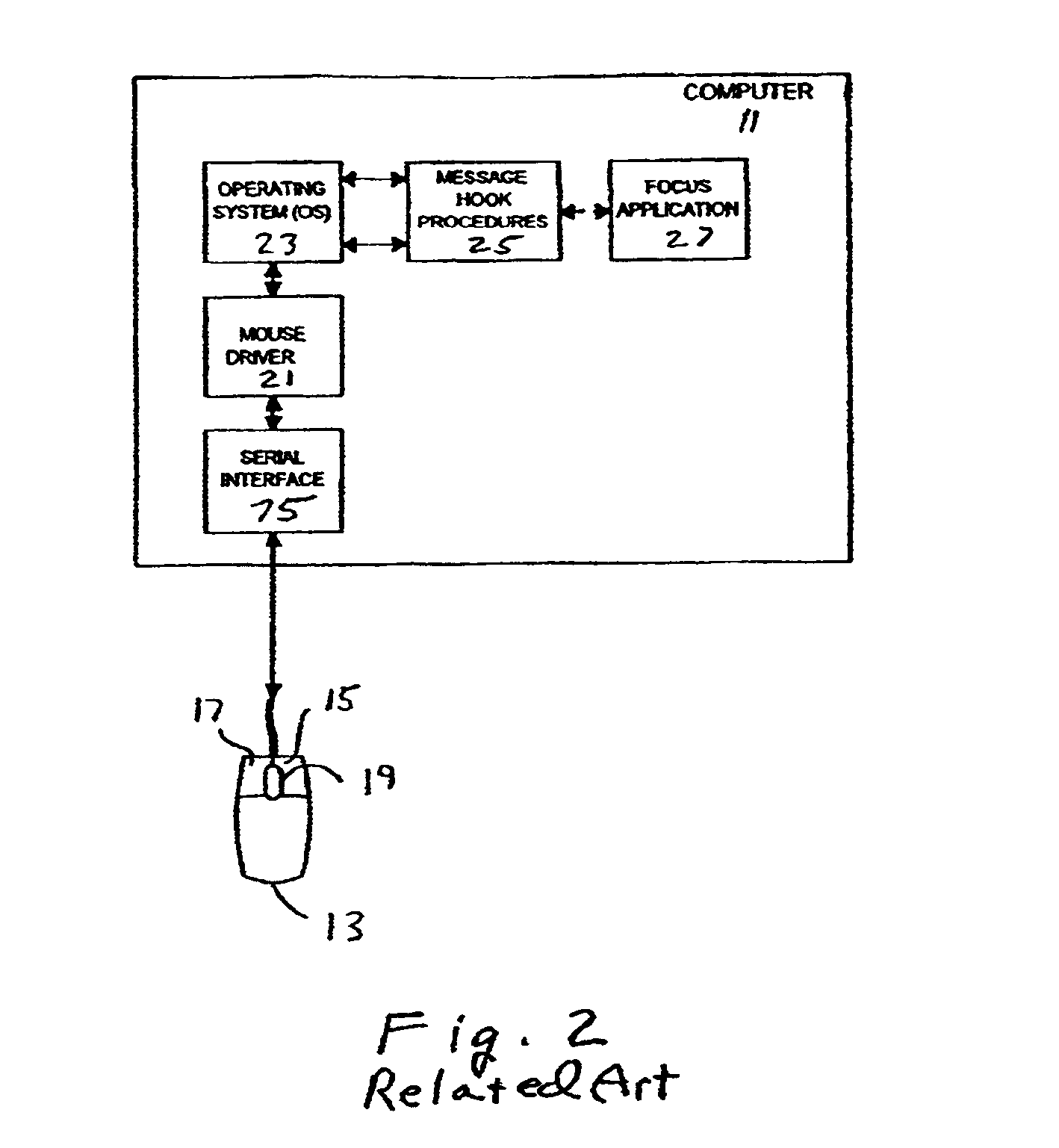Capacitive sensing employing a repeatable offset charge
a technology of offset charge and capacitor, applied in the field of capacitive sensing, can solve the problems of increasing the demand for longer intervals between battery replacement or recharging, increasing the time and energy consumption of such devices, and affecting so as to reduce time and energy, improve the reliability of detection, and effective power management
- Summary
- Abstract
- Description
- Claims
- Application Information
AI Technical Summary
Benefits of technology
Problems solved by technology
Method used
Image
Examples
Embodiment Construction
[0028]The present inventive systems and methods are described herein in terms of an exemplary application thereof within a computer input device, particularly a wireless, optically tracking computer mouse. It will be understood, however, that the inventions have much wider-ranging potential application. The capacitive sensing of the present invention is not limited to power management, but rather can be implemented in virtually any device (data input device or otherwise) where it is desired to determine the presence or non-presence of an object or body portion in contact with or close proximity to another object. This includes many applications where various other types of proximity sensors have been used, e.g., water valve actuation in toilets, faucets and drinking fountains, automatic door control systems, alarm systems, security lock systems and safety interlock systems (e.g., for industrial equipment), etc.
[0029]It will be understood that the phrase “contact with or close proxim...
PUM
 Login to View More
Login to View More Abstract
Description
Claims
Application Information
 Login to View More
Login to View More - R&D
- Intellectual Property
- Life Sciences
- Materials
- Tech Scout
- Unparalleled Data Quality
- Higher Quality Content
- 60% Fewer Hallucinations
Browse by: Latest US Patents, China's latest patents, Technical Efficacy Thesaurus, Application Domain, Technology Topic, Popular Technical Reports.
© 2025 PatSnap. All rights reserved.Legal|Privacy policy|Modern Slavery Act Transparency Statement|Sitemap|About US| Contact US: help@patsnap.com



